-
 Bitcoin
Bitcoin $105,495.4180
-0.21% -
 Ethereum
Ethereum $2,532.9701
-1.05% -
 Tether USDt
Tether USDt $1.0005
0.01% -
 XRP
XRP $2.1427
0.09% -
 BNB
BNB $644.0034
-1.52% -
 Solana
Solana $144.7535
-1.76% -
 USDC
USDC $0.9999
0.01% -
 Dogecoin
Dogecoin $0.1782
-0.48% -
 TRON
TRON $0.2709
-0.07% -
 Cardano
Cardano $0.6254
-2.05% -
 Hyperliquid
Hyperliquid $40.1521
-5.43% -
 Sui
Sui $2.9303
-4.30% -
 Chainlink
Chainlink $13.1995
-0.78% -
 Bitcoin Cash
Bitcoin Cash $433.3943
-1.08% -
 UNUS SED LEO
UNUS SED LEO $9.0813
1.24% -
 Avalanche
Avalanche $19.0345
-1.30% -
 Stellar
Stellar $0.2565
-1.39% -
 Toncoin
Toncoin $2.9571
-1.79% -
 Shiba Inu
Shiba Inu $0.0...01208
0.26% -
 Hedera
Hedera $0.1551
-1.85% -
 Litecoin
Litecoin $85.3588
-0.43% -
 Polkadot
Polkadot $3.7914
-0.78% -
 Ethena USDe
Ethena USDe $1.0004
0.00% -
 Monero
Monero $311.9380
0.64% -
 Dai
Dai $0.9999
0.02% -
 Bitget Token
Bitget Token $4.5248
0.11% -
 Pepe
Pepe $0.0...01097
-1.27% -
 Uniswap
Uniswap $7.2924
-2.89% -
 Pi
Pi $0.6092
5.31% -
 Aave
Aave $278.0189
-2.37%
Is the DMA indicator effective when it crosses below the zero axis? How to identify weak rebound signals?
"When the DMA crosses below zero in crypto trading, it signals weakening momentum and potential bearish trends, especially when confirmed by volume and other indicators."
Jun 14, 2025 at 09:35 am
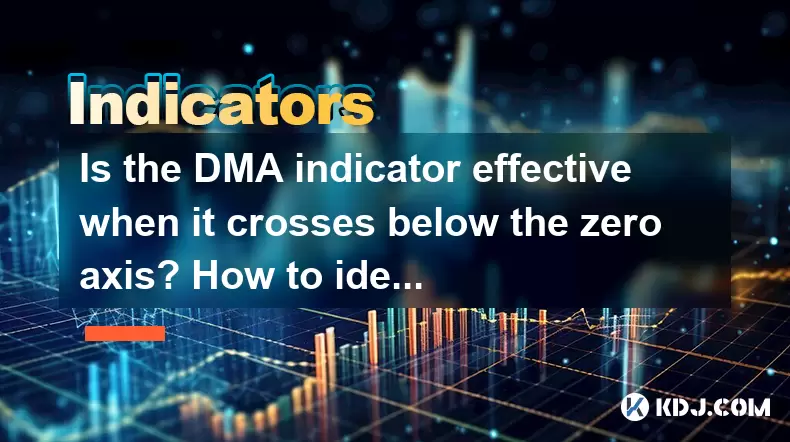
Understanding the DMA Indicator and Its Role in Cryptocurrency Trading
The DMA (Dynamic Moving Average) indicator is a technical analysis tool commonly used by cryptocurrency traders to identify potential trend reversals and momentum shifts. Unlike traditional moving averages, the DMA adjusts dynamically based on price volatility and volume, making it more responsive to market conditions. In the context of cryptocurrency trading, where price swings are frequent and often extreme, understanding how the DMA behaves during key transitions can provide valuable insights.
One such transition occurs when the DMA crosses below the zero axis, signaling a possible shift from bullish to bearish sentiment. However, interpreting this crossover requires deeper analysis beyond just observing the line crossing zero.
Important Note: The effectiveness of the DMA crossing below zero depends heavily on the prevailing market structure and confirmation from other indicators or candlestick patterns.
What Happens When the DMA Crosses Below Zero?
When the DMA crosses below the zero line, it typically indicates that the short-term average has dropped below the long-term average, suggesting weakening upward momentum. This event may precede a downtrend or at least a correction in an ongoing uptrend.
In cryptocurrency markets, especially for altcoins with high volatility, such crossovers can be misleading if not accompanied by supporting signals. Traders should look for:
- A clear break below the zero level
- Confirmation from volume spikes or increased selling pressure
- Bearish candlestick formations like engulfing patterns or dark cloud covers
It’s also crucial to observe the angle and speed of the crossover — a sharp drop suggests stronger conviction among sellers, while a slow descent might indicate indecision.
Identifying Weak Rebound Signals After a DMA Crossover
Following a DMA crossover below zero, the market may attempt to rebound due to oversold conditions or temporary buying interest. However, many of these rebounds are weak and fail to sustain. Identifying such false signals is critical for avoiding premature entries or falling into traps set by large players.
Signs of a weak rebound include:
- Lack of volume increase during the bounce
- Failure to reclaim previous resistance-turned-support levels
- Absence of strong candlestick reversal patterns
- Divergence between price action and momentum indicators like RSI or MACD
Traders should avoid entering long positions unless there's clear evidence of renewed strength, such as a breakout above a key moving average or a bullish cross in oscillators.
Combining DMA with Other Indicators for Confirmation
To enhance the reliability of the DMA crossover signal, it's advisable to combine it with other tools. For example:
- Volume Analysis: A significant increase in selling volume during the crossover strengthens the bearish case.
- RSI (Relative Strength Index): If RSI is already in oversold territory (<30) during a rebound, it may suggest exhaustion rather than strength.
- MACD (Moving Average Convergence Divergence): A bearish MACD crossover around the same time reinforces the DMA signal.
- Price Action Patterns: Look for rejection candles at resistance levels or continuation patterns like flags or pennants.
Using multiple confirmations reduces the risk of acting on a false signal and increases the probability of accurate trade decisions.
Step-by-Step Guide to Analyzing DMA Crossovers and Rebounds
- Ensure the DMA has clearly crossed below the zero axis on your chart
- Zoom out to check the broader trend — is it a continuation or a reversal?
- Examine volume bars to see if the crossover was supported by strong selling pressure
- Watch for any immediate price reaction — does the market continue lower or attempt a rebound?
- If a rebound forms:
- Check whether volume supports the move upwards
- Assess whether key support/resistance levels are being respected
- Observe RSI behavior — is it showing divergence or confirming weakness?
- Avoid taking counter-trend trades unless multiple indicators align in favor of a reversal
This process helps traders distinguish between genuine trend changes and temporary corrections, particularly useful in volatile crypto markets.
Practical Application in Cryptocurrency Markets
In real-world crypto trading scenarios, the DMA indicator performs best when applied to higher timeframes (like 4-hour or daily charts), where noise is minimized and trends are clearer. On shorter timeframes, the DMA may generate too many false signals due to the erratic nature of crypto price movements.
For instance, during a prolonged BTC downtrend, the DMA might cross below zero and stay there for several days, signaling sustained bearish control. Any rallies during this period that lack volume and fail to push the DMA back above zero are likely weak rebounds.
Conversely, if after a sharp sell-off the DMA drops below zero but quickly reverses and climbs back up, it could indicate a false breakdown or panic selling.
Frequently Asked Questions
Q: Can the DMA indicator be used alone for trading decisions?
A: While the DMA provides useful insights, it's most effective when combined with volume, price action, and other momentum indicators to filter out false signals.
Q: What timeframes work best with the DMA in crypto trading?
A: The 4-hour and daily timeframes tend to produce more reliable DMA signals due to reduced market noise and clearer trend identification.
Q: How do I differentiate between a strong and weak rebound after a DMA crossover?
A: A strong rebound usually comes with rising volume, bullish candlestick patterns, and positive divergences in momentum indicators, whereas a weak one lacks these elements.
Q: Is the DMA suitable for all types of cryptocurrencies?
A: The DMA works better on major coins like Bitcoin and Ethereum due to their relatively smoother price action compared to smaller, more volatile altcoins.
Disclaimer:info@kdj.com
The information provided is not trading advice. kdj.com does not assume any responsibility for any investments made based on the information provided in this article. Cryptocurrencies are highly volatile and it is highly recommended that you invest with caution after thorough research!
If you believe that the content used on this website infringes your copyright, please contact us immediately (info@kdj.com) and we will delete it promptly.
- Explore the Best Upcoming Crypto Presales
- 2025-06-15 05:55:13
- Diverging Trends in the Precious Metals Market
- 2025-06-15 05:55:13
- Maelstrom CIO Arthur Hayes Predicts Bitcoin Price Will Reach $1 Million by 2028
- 2025-06-15 05:50:13
- XYZVerse ($XYZ) has brought a brand-new concept to the memecoin niche by blending the excitement of sports with the fast-moving energy of crypto.
- 2025-06-15 05:50:13
- Bitcoin (BTC) Price Action Is Trapped Within a Tight Trading Channel
- 2025-06-15 05:45:13
- The entire cryptocurrency market is bracing for a major move after Bitcoin recently reached the crucial $95,000 mark before declining to the $90000 level.
- 2025-06-15 05:45:13
Related knowledge
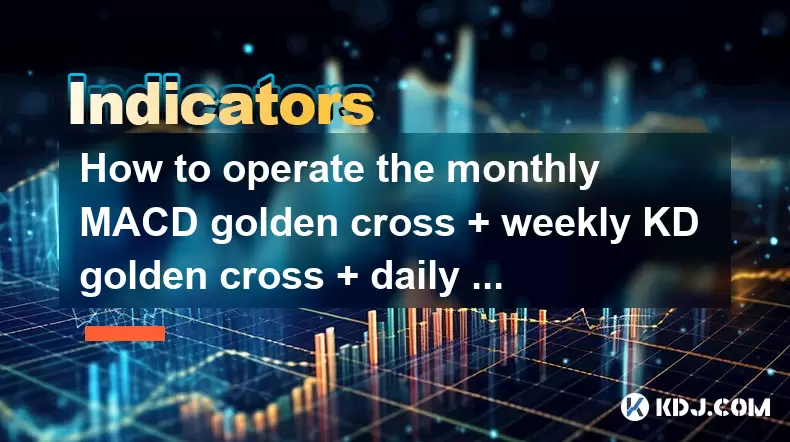
How to operate the monthly MACD golden cross + weekly KD golden cross + daily volume breakthrough?
Jun 15,2025 at 05:36am
Understanding the Strategy: Monthly MACD Golden CrossTo effectively operate the monthly MACD golden cross, traders must first understand what this signal entails. The MACD (Moving Average Convergence Divergence) golden cross occurs when the MACD line crosses above the signal line on a given chart timeframe. When this happens on the monthly chart, it sug...
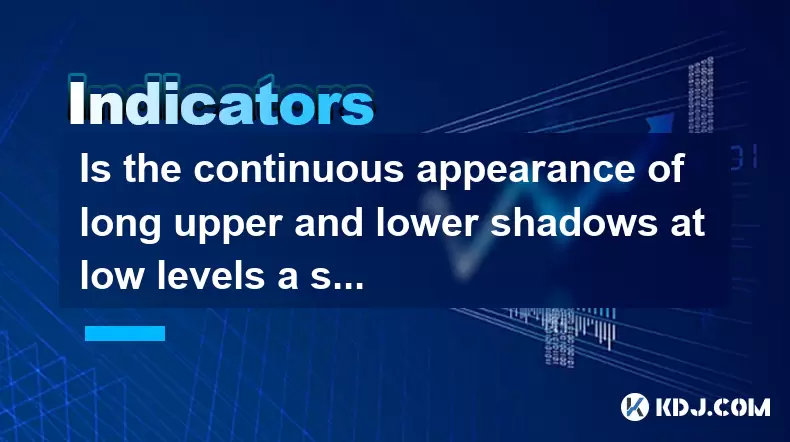
Is the continuous appearance of long upper and lower shadows at low levels a signal of accumulation?
Jun 15,2025 at 01:43am
Understanding Long Upper and Lower Shadows in Candlestick ChartsIn the world of cryptocurrency trading, candlestick patterns are widely used to analyze price movements. A long upper shadow, also known as a wick or tail, indicates that the price rose significantly during the period but was pushed back down by selling pressure. Conversely, a long lower sh...
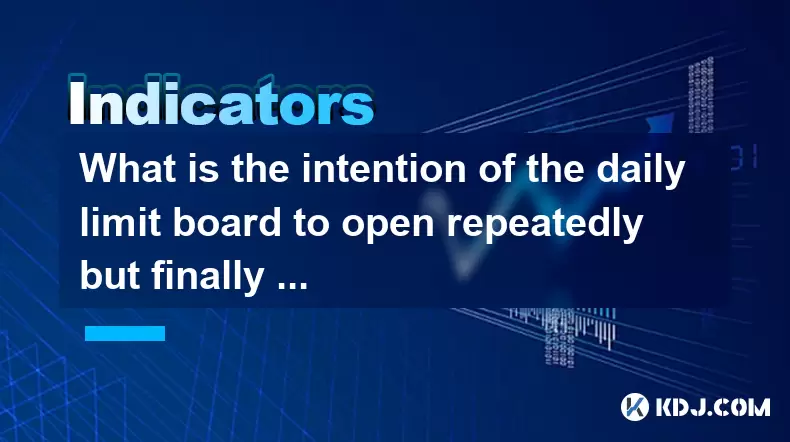
What is the intention of the daily limit board to open repeatedly but finally close?
Jun 15,2025 at 01:08am
Understanding the Daily Limit Board in Cryptocurrency TradingIn cryptocurrency trading, a daily limit board refers to a price movement restriction mechanism applied by certain exchanges or regulatory bodies. This mechanism is primarily used to prevent extreme volatility and panic selling or buying during periods of intense market fluctuation. When an as...

How to calculate the probability of trend continuation after the MACD column divergence?
Jun 14,2025 at 08:01am
Understanding MACD Column DivergenceThe Moving Average Convergence Divergence (MACD) is a widely used technical indicator in cryptocurrency trading. The MACD column, also known as the histogram, represents the difference between the MACD line and the signal line. When price makes a new high or low but the MACD histogram does not confirm this movement, a...
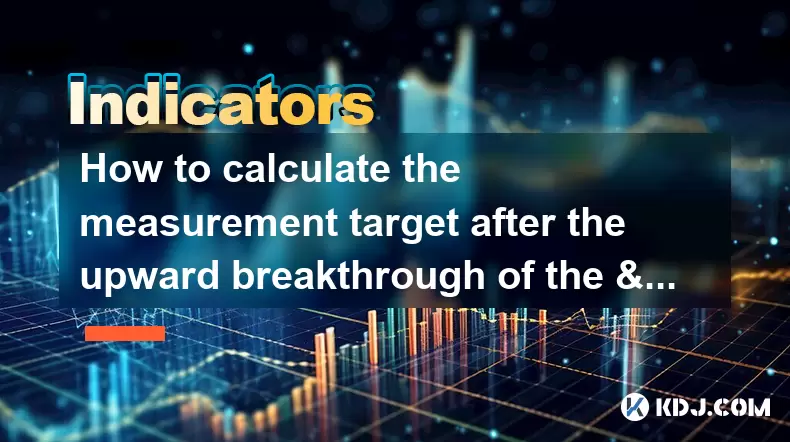
How to calculate the measurement target after the upward breakthrough of the "descending wedge"?
Jun 15,2025 at 05:00am
Understanding the Descending Wedge PatternA descending wedge is a technical analysis pattern typically found in price charts of cryptocurrencies. It is characterized by two converging trendlines: one drawn along a series of lower highs (resistance) and another connecting a series of higher lows (support). This pattern usually indicates a potential bulli...

What are the volume requirements for adjusting the K line in the "rising three methods" pattern?
Jun 14,2025 at 07:50am
Understanding the 'Rising Three Methods' Pattern in Cryptocurrency TradingThe 'rising three methods' pattern is a bullish continuation candlestick formation that traders often use to identify potential upward momentum in cryptocurrency price charts. This pattern typically appears during an uptrend and suggests that the trend is likely to continue after ...

How to operate the monthly MACD golden cross + weekly KD golden cross + daily volume breakthrough?
Jun 15,2025 at 05:36am
Understanding the Strategy: Monthly MACD Golden CrossTo effectively operate the monthly MACD golden cross, traders must first understand what this signal entails. The MACD (Moving Average Convergence Divergence) golden cross occurs when the MACD line crosses above the signal line on a given chart timeframe. When this happens on the monthly chart, it sug...

Is the continuous appearance of long upper and lower shadows at low levels a signal of accumulation?
Jun 15,2025 at 01:43am
Understanding Long Upper and Lower Shadows in Candlestick ChartsIn the world of cryptocurrency trading, candlestick patterns are widely used to analyze price movements. A long upper shadow, also known as a wick or tail, indicates that the price rose significantly during the period but was pushed back down by selling pressure. Conversely, a long lower sh...

What is the intention of the daily limit board to open repeatedly but finally close?
Jun 15,2025 at 01:08am
Understanding the Daily Limit Board in Cryptocurrency TradingIn cryptocurrency trading, a daily limit board refers to a price movement restriction mechanism applied by certain exchanges or regulatory bodies. This mechanism is primarily used to prevent extreme volatility and panic selling or buying during periods of intense market fluctuation. When an as...

How to calculate the probability of trend continuation after the MACD column divergence?
Jun 14,2025 at 08:01am
Understanding MACD Column DivergenceThe Moving Average Convergence Divergence (MACD) is a widely used technical indicator in cryptocurrency trading. The MACD column, also known as the histogram, represents the difference between the MACD line and the signal line. When price makes a new high or low but the MACD histogram does not confirm this movement, a...

How to calculate the measurement target after the upward breakthrough of the "descending wedge"?
Jun 15,2025 at 05:00am
Understanding the Descending Wedge PatternA descending wedge is a technical analysis pattern typically found in price charts of cryptocurrencies. It is characterized by two converging trendlines: one drawn along a series of lower highs (resistance) and another connecting a series of higher lows (support). This pattern usually indicates a potential bulli...

What are the volume requirements for adjusting the K line in the "rising three methods" pattern?
Jun 14,2025 at 07:50am
Understanding the 'Rising Three Methods' Pattern in Cryptocurrency TradingThe 'rising three methods' pattern is a bullish continuation candlestick formation that traders often use to identify potential upward momentum in cryptocurrency price charts. This pattern typically appears during an uptrend and suggests that the trend is likely to continue after ...
See all articles

























































































